HORSEWHIPS, HARLEYS & HEROES ON CLASSON
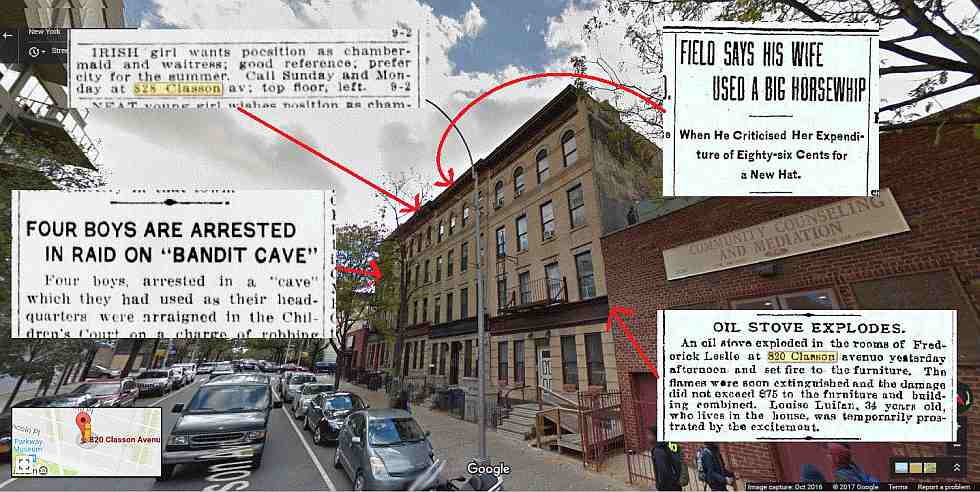
Brownstone Detectives investigates the history of our clients’ homes.
The story you are about to read was composed from research conducted in the course of one of those investigations.
Do you know the history of YOUR house?
********************************************************************************************************************************
“Every house has a story to tell.”
That is how the Brownstone Detectives visualizes every structure, building, and house – as historical repositories for their human narratives. And the Brownstone Detectives, a for-hire historical research team, has investigated many of the stories that are a part of these narratives.
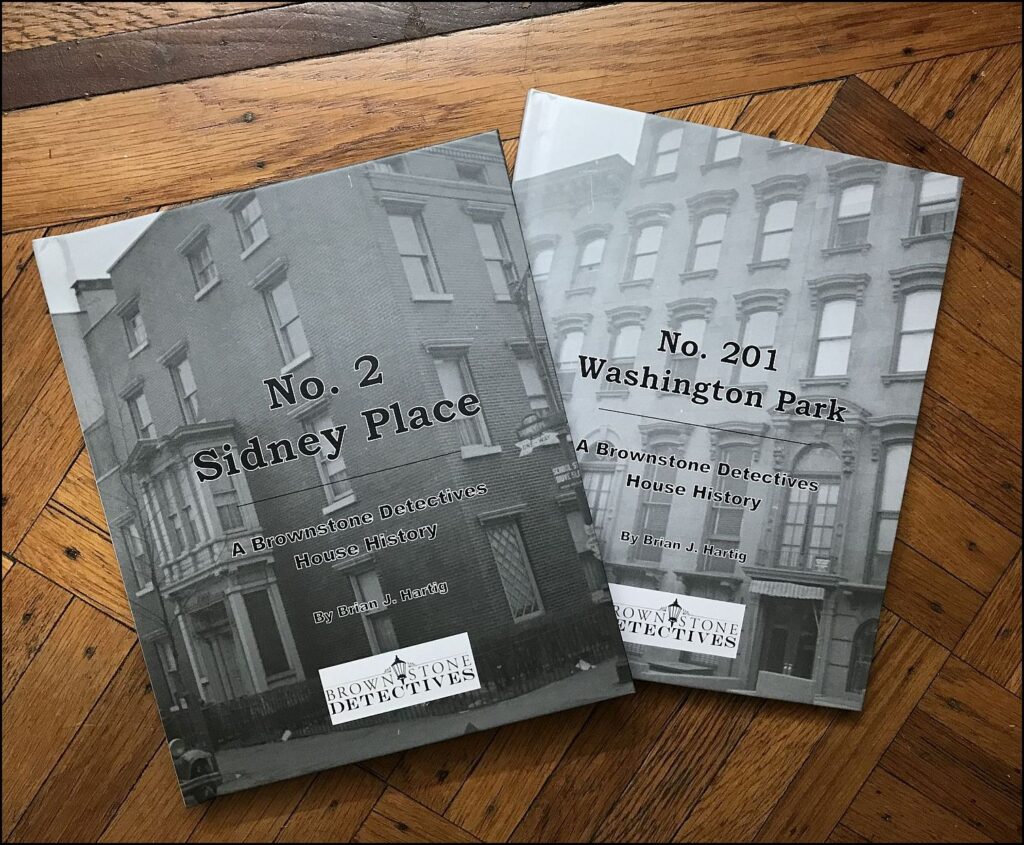
And Brownstone Detectives has literally seen them all – from accounts concerning a house’s residents (unrequited love, murder, discrimination, &c.) to those involving the buildings themselves (explosions, fires, hidden rooms, &c.).
“If you’re sitting in an old house right now – anywhere in this country – the human drama that’s taken place all around you would surprise the heck out of you,” said lead detective Brian Hartig.
…NOW TO THOSE HORSEWHIPS…
To give an example of the veritable goldmine of stories linked to every Brooklyn house, the detectives recently scratched the surface on a row of four connected tenement buildings in the Prospect Heights section of Brooklyn.
The brick and brownstone tenement buildings at Nos. 820-832 Classon Avenue display a cross-section of the colorful tales that newspapers used to cover in their beats. In fact, due to the transient nature of the residents of these specific buildings over the 120 years of their existence, these structures hold an even larger number of the building blocks of those narratives.
Scrolling through the archives of several Brooklyn dailies recently, the Brownstone Detectives have exhibited evidence of this, digging up old stories which bring to life the colorful nature of these austere brick structures.
Let’s consider a few:
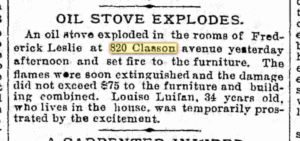
820 Classon Avenue – Not long after construction on this tenement building had been completed in 1898, an explosion rocked the structure and started a fire.
“An oil stove exploded in the rooms of Frederick Leslie…yesterday afternoon and set fire to the furniture,” noted the Brooklyn Daily Eagle. “The flames were soon extinguished and the damage did not exceed $75 to the furniture and building combined.”
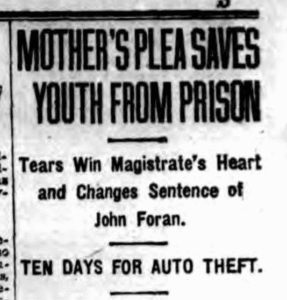
There was, however, another casualty of the incident.
“Louise Luifan, 34 years old,” another occupant of the house, “was temporarily prostrated by the excitement.”
It is believed that the lady eventually recovered.
Another story, involving residents of No. 820, regarded a mother who saved her 19-year-old son from a year in the penitentiary on a conviction of auto theft. Appearing before the court, she made her plea on his behalf.
“Please give him another chance,” she begged the court, as the story was relayed by the Brooklyn Standard Union in 1922. “Can’t you give him a lighter punishment? I will do my best to get him work and see that he goes right.”
Magistrate Liota, the paper stated, heeded the pleas and the boy was “sent to the workhouse for ten days.”
824 Classon Avenue – In 1900, when the building was just a few years old, a young couple found themselves on the receiving end of some bad press of their own making.
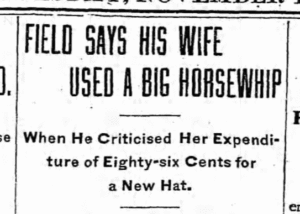
“George Field of 824 Classon avenue,” began the Brooklyn Daily Eagle, “who says he is 27 years old, but who with his boyish face looks several years younger, told Magistrate Steers in the Grant street police court today a strange case of woe.”
Field went on to describe “an alleged horsewhipping that he had received from his wife, how she locked him out of doors and otherwise maltreated him.”
The wife, in her defense, claimed “to be three months younger than he, but as she is the mother of a ten year old boy, by a former husband,” the magistrate seemed to doubt her story.
“Saturday night I gave my wife $8 to buy her a hat,” attested Mr. Field. “She told me that she was going to buy it at one store, but the ticket showed that she had gone to another place and bought a hat frame for 19 cents and a silver buckle for 67 cents. When I found this out I accused her of again deceiving me. Then she flew into a rage and, with a horsewhip and gave me a terrible beating about the body.
Then came the kicker.
“My mother always told me not to strike a woman, so I stood there with my hands at my side while she plied the whip.”
Heroic.
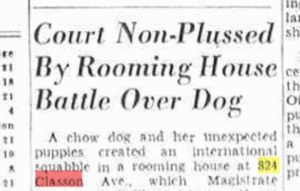
According to the New-York Daily Tribune, she was later found guilty of the horsewhipping. The sentence was suspended, though, as she was let off with just a warning.
In 1939, “an international squabble in a rooming house at 824 Classon Ave.,” was fought over a “chow dog.”
Joseph Chudoba, 60, a German, owned the chow, The Brooklyn Eagle noted. “He also owed $5 room rent to Mrs. J. Gulevich, the Polish landlady.
How Gulevich handled the due rent, though, was surprising and stands as an insight into another time.
“She took the dog, gave him $2 and called it square. Then she sold the dog to Mrs. Anna Liam, 78, a Norwegian, also a roomer in the house.
“In a couple of weeks there were puppies,” the story continued with another twist. “Chudoba felt they belonged to him and sold the three pups for $3. Mrs. Liam charged Chudoba with petty larceny.”

828 Classon Avenue – In 1915, an “Irish Girl,” who lived at No. 828, was seeking a “position as chambermaid and waitress.” Advertising your nationality in a nation of immigrants was important at the time as many of these 1st and 2nd generation immigrant homeowners tended, in most cases, to trust those whose ethnic backgrounds they understood.
She noted that she had a “good reference,” and that she preferred to work in the “city for the summer,” and that those seeking such help were to call her “Sunday and Monday at 828 Classon av; top floor, left.”
It was also apparent that living at No. 828 was a pitcher for a semi-pro baseball team, the Classon Athletic Club, or the “Classon A.C.” An ad in the paper in 1915 showed how that this pitcher, Frank Schwint, was “averaging 11-13 (wins-losses)” and was willing to “travel and play on home grounds.” In other words, he was placing himself out there as a hired gun on the mound.
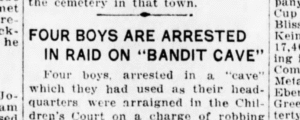
832 Classon Avenue – In 1921, the members of a vicious and vile neighborhood gang had recently been caught by police. Its members, “four boys” were “arrested in a cave which they had used as their headquarters. They were then arraigned in the Children’s Court on a charge of robbing the poor box of St. Theresa’s R. C. Church, Classon ave. and Sterling pl.”
One of the gang members was George Lynch of 832 Classon. Each of the four boys was all of 13 years old. They had “fitted up a hollow in the ground with a table, chairs and a strove, to which, according to the police, they were in the custom of retiring after committing petty thefts in the neighborhood.”
(What a seriously cool clubhouse to have had! Considering, though, that much of that area was being built up around the time, where in the neighborhood might this “cave” have been?)

The boys were remanded to the Children’s Society which likely contacted their mothers and spoke with them about reforming their children.
In 1921, a man by the name of “Sherman” was selling his “Harley-Davidson motorcycle, with side car, rear seat, tools.” The bike was in excellent condition,” and Sherman was offering a “demonstration” and selling the motorcycle for “cheap.” He asked that those interested “call Sunday” at “832 Classon av.”
Is is not known whether Sherman ever got rid of that very cool sounding bike, but the connection of the motorcycle with No. 832 Classon serves as a fascinating part of truly colorful lineage.
Of course, these graphic vignettes are simply a few of the stories from each of the four tenement houses on that block. Imagine what a little digging and investigating would do toward uncovering the full stories of the individuals involved.
But for that you may need a detective – a Brownstone Detective. 😉
———————————————————————————————————————–
 Brownstone Detectives is an historic property research agency. Our mission is to document and save the histories of our clients’ homes. From our research, we produce our celebrated House History Books and House History Reports. Contact us today to begin discovering the history of your home.
Brownstone Detectives is an historic property research agency. Our mission is to document and save the histories of our clients’ homes. From our research, we produce our celebrated House History Books and House History Reports. Contact us today to begin discovering the history of your home.